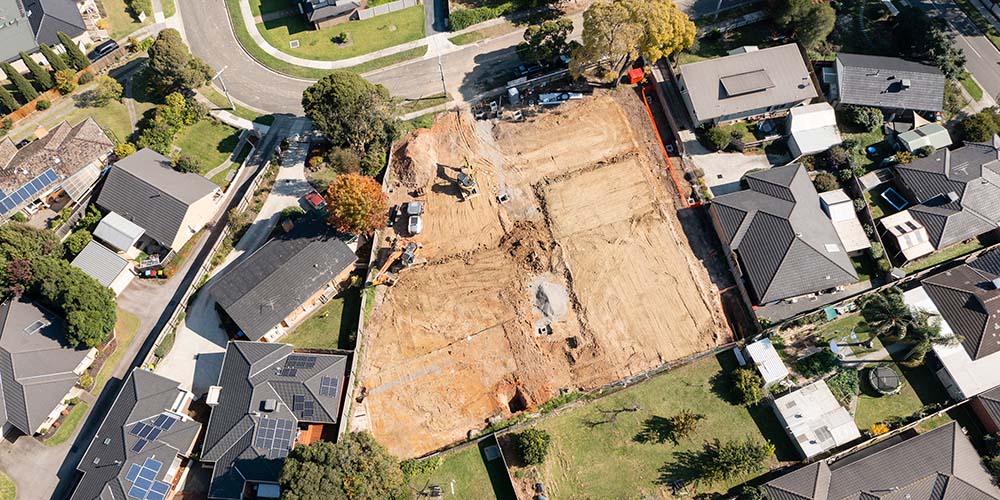
How Much Does Subdivision Cost a Developer?
Where do I find the answer to my question how much does subdivision cost? The answer is different from job to job, as there is variable scope of work from site to site. This article will explore the cost components that as a whole will cover the work and fee scope for a typical subdivision project. What needs to be understood is that no one job is the same- whilst a ballpark figure can be estimated with reasonable accurate, there is no overall unit or square meter rate that can be applied to answer the question “how much does subdivision cost”.
Subdivision Statutory Charges
When subdividing land in Perth, people realise a wide variety of subdivision costs on their projects. Some subdivision costs are statutory and regulatory charges. These are fees payable to the WAPC (West Australian Planning Commission), Landgate, Local Government Authorities and Councils, and Utility providers. These are typically:
- Application fees for forms 1A and 1C, amalgamations and strata conversions
- Co-contributions for drainage upgrades, open space and other local government amenity upgrades
- Document and plan processing fees
- Development Application fees (required for some subdivision applications in certain local government areas)
- Contributions for access to power, water, sewer and costs associated with installing infrastructure upgrades on the lot for future access
Subdivision Consultant Fees
Land subdivision projects will also attract a number of foreseeable costs and fees from professional consultants for planning and management of the subdivision process. These costs and fees can include:
- Subdivision engineering and drawing production for earthworks, retaining, drainage and utility access layout
- Subdivision surveying, service pegging and production of Survey Strata Plans and Deposit Plans for lodgment with Landgate and the WAPC
- Project Management fees, inclusive of works scheduling, tendering and co-ordination Preparation and lodgment of service agreements with Utility Providers, usually being Western Power and Watercorp, and occasionally ATCO gas and Telecommunications providers
- Preparation of notices and easements particular to the new titles for the property being subdivided
- Assistance with land development and subdivision condition disputes with SAT and/or local government to alter or remove development conditions on a subdivision Decision Letter form the WAPC
How much does Subdivision cost in Site-works?
Above the Ground
The lion’s share of costs for most projects however, are realised in the subdivision site-works component. When people ask what does it cost to subdivide property, the more important question is how much does site-work cost? This is the greatest area of variation from project to project, and can run into the tens of thousands of dollars. Conditions in decision letters will be similar, however every project will be in a different suburb under the jurisdiction of a different local government authority. Different local government Authorities have different requirements and specific planning policies that dictate the extent of site-works that must be performed by developers in their jurisdiction.
It is important to research the extent and specification of site-works your local government requires, and whether the site-works need to be performed by the land developer or by the person building a dwelling on the site at a later date. Site-work costs include all the typically foreseeable items associated with subdividing land. This includes:
- Site clearing
- Tree and stump removal
- Fencing
- Access leg construction
- Crossover construction
- Demolition of dwellings, outbuildings and structures
Below the Ground
The higher risk (and more important) answers to how much does subdivision cost for a project lay beneath the ground, not above it. This is where many novice developers get nasty surprises, and discover the reality of what it truly costs to subdivide land in Perth only once the project is well underway. Below the ground, we need to consider subdivision costs associated with:
- Decommissioning of old soak wells and septic systems. There may be remnants of old sewerage and drainage systems below the ground on the rear of subdivide-able lots. The cost of decommissioning these and remediating the site in preparation for building falls on you, the developer
- Laying of dormant conduits and pipework for services. This can include water, sewerage and power (sometimes Telstra and gads conduit) to facilitate access to services by each lot without the need to intrude on neighbouring lots at a later date. This is particularly important to consider with survey strata configurations, where there is only a single point of service supply for sharing per freehold lot.
- Soil classification and remediation. The soil classification will be the biggest changing variable in determining how much does subdivision cost, from one job to the next. Most local governments and councils will apportion the cost of ensuring the ground you are subdividing is suitable for building on by the future purchaser. This will often require geotechnical testing, reporting and post works certification by a Geotechnical engineer as a minimum. Ready for development means level, clean, compact sand, ready to take residential dwellings such as single or two story houses, units and ancillary/aged care dwellings. Clay soils are often not suitable , and will require significant remediation site-works (dictated by the geotechnical engineer) to bring the site up to a ready-to-develop standard. This must be carefully studied and ascertained at a feasibility stage- the cost of removing and replacing a one meter depth of clay soil with clean sand fill across a 1000m2 site is significant!
- Drainage. Most local governments will now require the developer to install significant on site drainage infrastructure to contain storm water on site in-lieu of connecting to council drainage systems. The type of drainage system will be dictated by local government planning policies, professional design work by an engineer and the soil classification and slope of the site. Some local governments will also make you retrospectively upgrade the drainage system of any retained dwellings as part of subdivision condition clearance. Depending on the local government requirements and soil classification of the site to be subdivided, drainage costs can be significant.
- Retaining works. This is to accommodate future development of sloping sites, and maintain existing (but different ) ground levels between neighbouring lots or lots on the same subdivision site. Most councils will require retaining along neighbouring boundaries when there is a finished ground level difference over 200mm- Super six fencing is not acceptable as a retaining system for a two foot drop in ground level between you and your neighbour! You will need to consider not just the site-works cost of the retaining, but also the engineering costs, negotiations with your neighbour, development approval (DA) from council and issuance of building permits (typically required for all retaining systems over 500mm in height in most Councils).
Subdivision costs below the ground can be significant, and need to be carefully investigated for each project and site. It is definitely an area where it pays to spend some money on subdivision feasibility studies before you start the project, to get a better picture of how much does site-work cost for your project! Typically site-works costs for small lot subdivisions will exceed $50,000, and the below ground component is often more than half of this. Clay sites will easily exceed these figures. Detailed discussions about site works scope and costing are had in our 225 page Infill Property Developer Guide-book and correlating Online Course.



